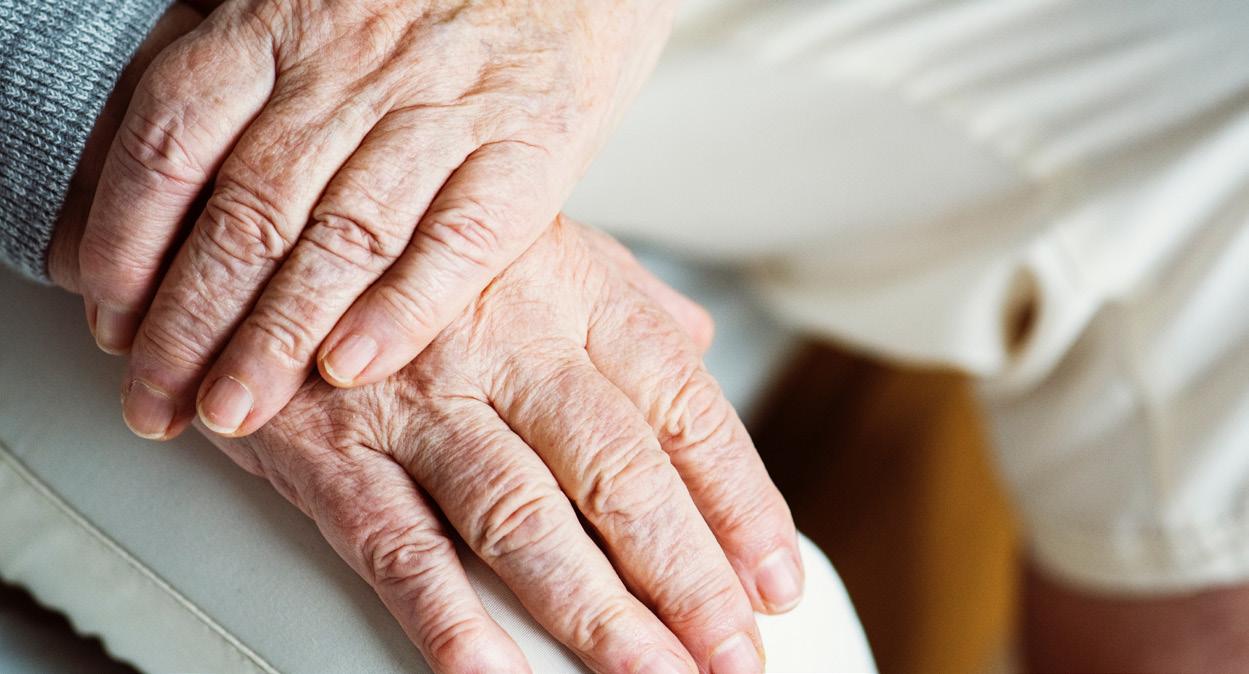
5 minute read
Hidden in plain sight? Elder Sexual Abuse
by QCDFVR
Di Macleod, Director, Gold Coast Centre Against Sexual Violence Inc.
Age is not a protective factor in relation to sexual abuse. Ageism and sexism combine to render older women invisible. Then if we combine this with the issue of sexual violence, which is also largely invisible, the result is that the sexual abuse of older women is doubly invisible. The lack of prevalence data on the sexual abuse of older women further obscures the problem. However, the lack of data does not equal the absence of sexual abuse. The fact that Elder Sexual Abuse (ESA) is under researched and under reported has led to the misconception that it rarely happens.
Advertisement
Elder Sexual Abuse can hide in the terminology of Elder Abuse when it is really domestic and/or sexual violence in later life. Victims of ESA are less likely to have someone believe them, especially if there have been no signs of trauma to the body. Those ESA victims are the least likely to get a conviction out of the acts perpetrated against them. (Burgess, 2006)
Although ESA can happen to anyone, research indicates that women are six times more likely to be victims of elder sexual abuse. However, less than 30 percent of elderly victims of sexual abuse report the abuse to authorities. (Pennsylvania Coalition Against Rape, n.d.)
What is Elder Sexual Abuse?
Elder Sexual Abuse (ESA) is any unwanted sexual behaviour, language, or activity that makes an older person feel uncomfortable, frightened, or threatened. It is about power not sex. It can be anything sexual that a person does not consent to. This includes when a person is afraid, sedated, asleep or has a disability that makes it difficult to understand what is happening. The offender is often a partner, son, grandson, family member, carer or worker. Elder Sexual Abuse includes rape and sexual assault and other behaviours such as: • Forcing or tricking someone into sexual activity • Repeatedly making explicit sexual remarks • Forcing someone to look at sexual picture or videos • Photographing a person’s body or private parts without permission • Looking for excuses to perform unnecessary cleaning and/or treatment of a person’s private parts
Why talk about it?
ESA can be hidden by shame and secrecy. That doesn’t mean it’s not real or that it’s rare. Knowing that this does happen and that there are people who will listen, can help an older person speak out. A person may have been living with abuse for decades without being able to name it as abuse. This is more complicated if the abuser is also their carer.
What are the signs?
There are many signs that ESA is occurring. These can be physical or behavioural and may include the following signs:
• Appearing overwhelmed, anxious, or afraid
• Withdrawal from people and activities previously enjoyed
• Injuries that don’t match the explanations
• Problems walking or sitting
• Recent incontinence (bladder or bowel) • Bruising to the body
• Sleep disturbances
• Sudden changes in mood
• Self-harm
• Torn or stained underwear
• Fear of a specific individual or location
• Sexually transmitted infection (STI) It is important to note that abuse may occur without any signs and sometimes the signs may be caused by something other than abuse.
What are the risk factors?
Sometimes as people get older, they become more vulnerable. The known risk factors for ESA include:
• Other types of abuse including financial
• Dependence on a family member or carer
• Difficulties with language or communication
• Mental health issues
• Dementia or impaired capacity
• Alcohol or drug misuse
• Social isolation
• Diverse sexuality and gender (e.g. LGBTIQ+)
What can you do?
If an older person discloses sexual abuse, it is important to start by believing. Don’t immediately assume it is arising from confusion or dementia.
LISTEN to them carefully, with empathy and without judging.
RESPOND with phrases like “I believe you” “Thank you for telling me” “It’s not your fault” or “I’m sorry this happened to you”.
SAFETY of the older person should be the focus. They should control decision making. Explore their needs and concerns to help find safe options.
SEEK medical treatment if there are any injuries or immediate health concerns.
REPORT to the police and any relevant health service providers. In an emergency call 000.
SUPPORT Domestic Violence and Centres Against Sexual Violence are for older people too. Provide information and let them know support is available.

Elder Sexual Abuse training is available
Gold Coast Centre Against Sexual Violence has developed the first Australian two-day capacity building training for workers specifically on ESA. This specialist trauma and elder informed training is aimed at increasing workers’ confidence, knowledge, skills and capacity to recognise and respond to Elder Sexual Abuse.
The content will include: Broader context // Elder abuse, sexual violence and DV // Elder sexual abuse definition, nature, myths and statistics // Legal and ethical considerations // Impact of Elder sexual abuse // Needs of victim/survivors // Cultural considerations // Tools and resources // Referral pathways // Facilitating and responding to a disclosure
By participating in this training, you will: Understand more about the complex nature or Elder Sexual Abuse // Improve confidence in identifying Elder Sexual Abuse // Enhance capacity in responding to the issue // Increase skills in providing appropriate support // Develop knowledge of referral pathways // Gain knowledge of resources that will assist you in your work
This training can be tailored to your organisation’s need. Please contact Di Macleod to discuss E: director@stopsexualviolence.com or P: 07 5591 1164
Extracts adapted from Shamaskin-Garroway, Giordano & Blakley (2017)
Aside from the moral and ethical imperative to focus research and advocacy efforts on this topic, there is a public health need to develop effective screening, assessment and intervention. Given the frequent interactions between older adults and the health care system, part of this effort must include training front-line medical providers of older adults.
Sexual consent capacity among older adults is a noteworthy issue that can complicate assessment of ESA. Given that the prevalence of cognitive impairment increases with age, it is critically important to assess whether a person has capacity; that is whether these are present:
• rationality (person’s ability to make a knowledgeable decision),
• knowledge (awareness of the risks and potential consequences of sexual activity),
• and voluntariness (individual’s ability to take self-protective measures against unwanted sexual advances/activity).
Furthermore, an older adult who lacks capacity to consent to sexual activity may be a victim of sexual mistreatment but may not recognise and report they have been abused. At the heart of this ethical issue is balancing one’s rights to autonomy with the need to protect older adults from harm.
References: Burgess, W. A. (2006). Elderly Victims of Sexual Abuse and Their Offenders, Report National Institute of Justice, Washington, DC. Retrieved from https://www.ncjrs.gov/pdffiles1/nij/grants/216550.pdf Pennsylvania Coalition Against Rape. (n.d.) Elder sexual abuse: The hidden victim. A training program for law enforcement. Retrieved from https://pcar.org/resources


